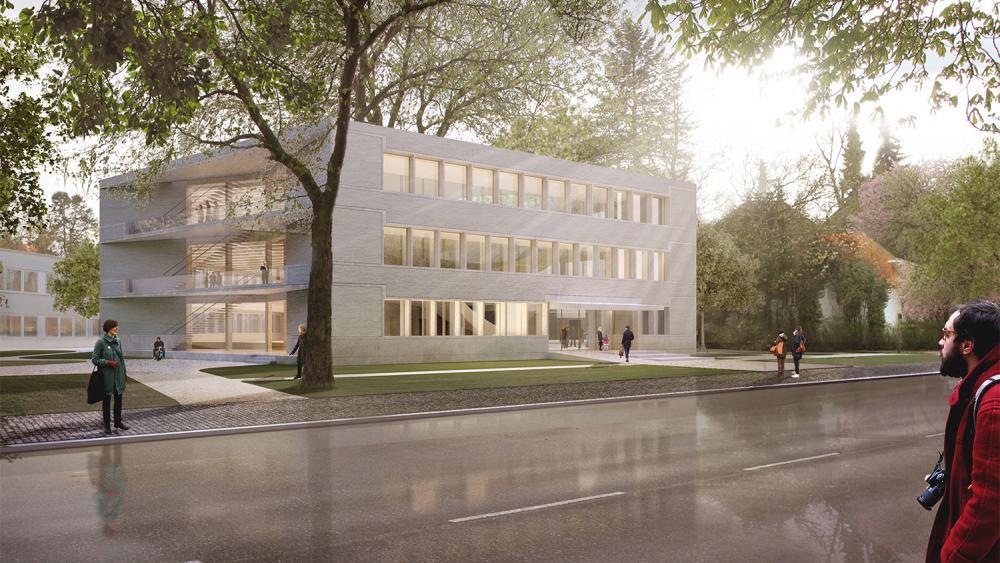Biodiversity Building Dahlem
The Idea for a Joint Biodiversity Building
The idea for the joint biodiversity building was born around 15 years ago. Back then, as it is today, it was primarily the joint professorships of the IGB and Freie Universität Berlin that had the opportunity for spontaneous professional exchange on-site. To give this gain for biodiversity research a literal space, the plan for the joint scientific building was put into action.

The new Joint Biodiversity Building will be one of the first research buildings in Germany to achieve the Gold certification under the “Sustainable Building Rating System for Federal Buildings.” The architectural competition for its construction was won by Glass Kramer Löbbert bda – Gesellschaft von Architekten. | Image: ibid.
A Sustainable Research Building Meeting the Gold Standard
The pentagon-shaped building is being constructed on the research campus Dahlem of Freie Universität Berlin, at Königin-Luise-Straße 28-30. You wouldn’t know it by looking at the foundation stone, but once completed, the building will not only serve environmental research but will also adhere to strict environmental standards. To achieve the highest quality level—Gold—under the Sustainable Building Rating System for Federal Buildings, the facility must meet the principles of energy-efficient and sustainable construction. For instance, the building will feature sunshades with light-guiding elements in front of the windows, a photovoltaic system on the roof, and will be constructed using durable but recyclable materials. It is intended to embody the concept of sustainability both scientifically and architecturally, making it one of the first research buildings in Germany to meet the Gold Standard.
In addition to shared offices and laboratories, the two institutions are also sharing the construction costs, which amount to approximately 20 million euros. The IGB’s portion is being funded through support from the Leibniz Association as part of a major construction project financed by the Federal Ministry of Education and Research (BMBF) and the Berlin Senate Chancellery for Science and Research. The project is being managed by the Forschungsverbund Berlin e.V. (FVB), Berlin’s largest non-university research organization, of which the IGB is one of eight institutes. Once completed, the building will be operated by Freie Universität Berlin.